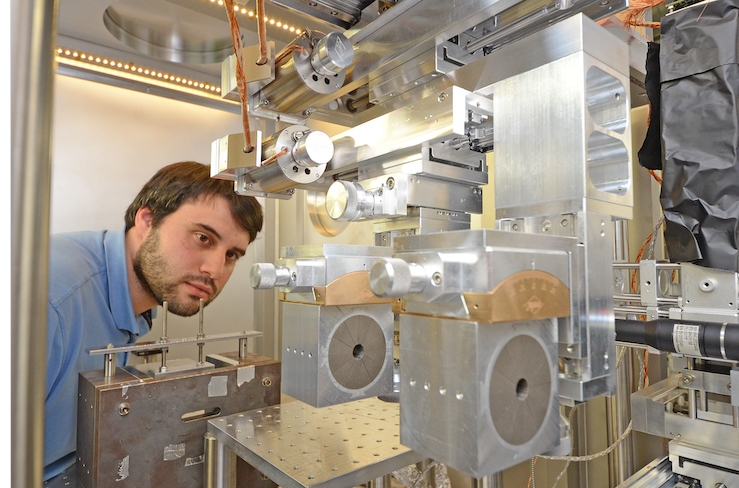Transport and beam line development
To match the compact size of the laser-driven ion source, we aim to miniaturize the systems for
transporting and refocusing the bunches. Many potential applications of laser-driven ions
require delivering particles to a remote location from the laser-target interaction. This allows
irradiations under different conditions, such as in air, while also minimizing secondary radiation
from the target.
Achieving high particle fluences at the irradiation site requires a beamline that actively focuses
the ions. The broad energy spectrum and extremely small emittance of laser-accelerated ion
bunches present a unique challenge for conventional ion transport systems, necessitating
innovative approaches. Our goal is to manipulate the phase space of the particle bunch to
optimize it for specific applications.
We employ permanent magnet quadrupoles for transverse focusing, aiming to achieve a sub-
millimeter focus of laser accelerated protons. This demands precise magnetic field
measurements and high-precision characterization. To ensure reproducible magnet positioning
with micrometer accuracy, we developed both offline and online alignment methods, enabling
on-site energy selection. Additionally, we investigated protection and damage mitigation
strategies essential for operation near the laser-target interaction.
Our beamline development is supported by ion-optical simulations and modeling, allowing us
to better understand and control the transport of broad energy spectra. These calculations help
predict fluence and spectral distribution at the ion focus and provide deeper insights into the
microscopic properties of the laser-driven ion source.


